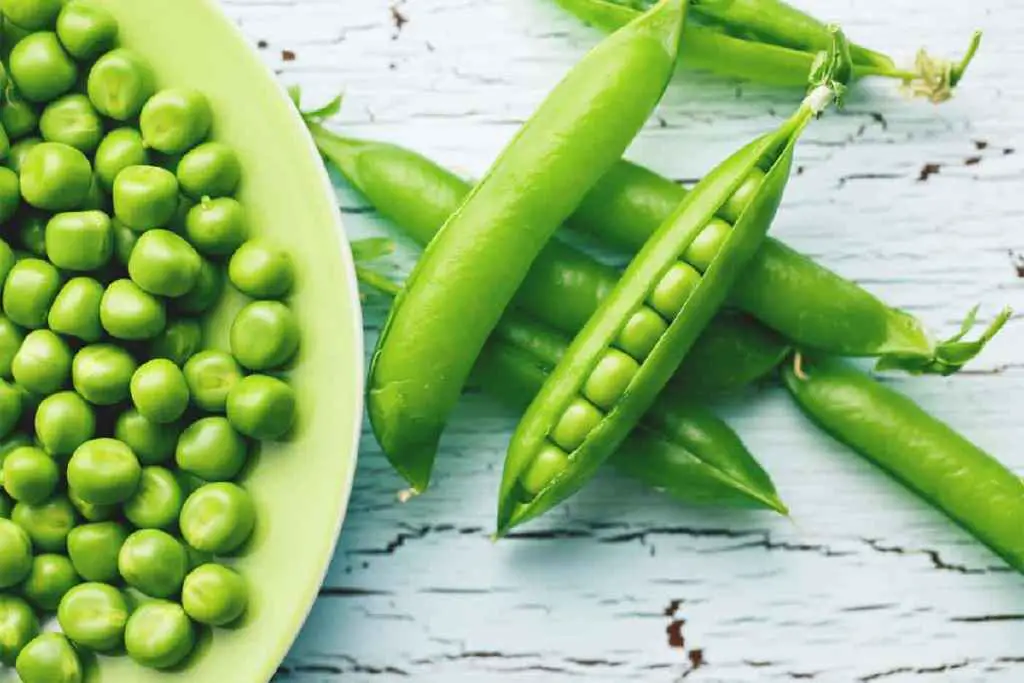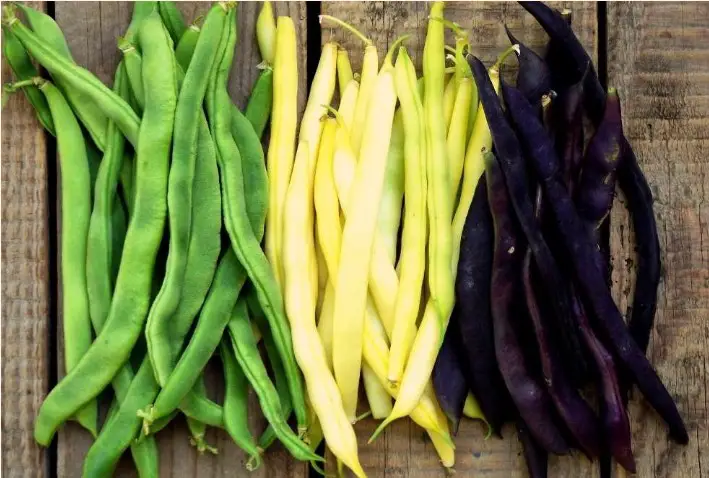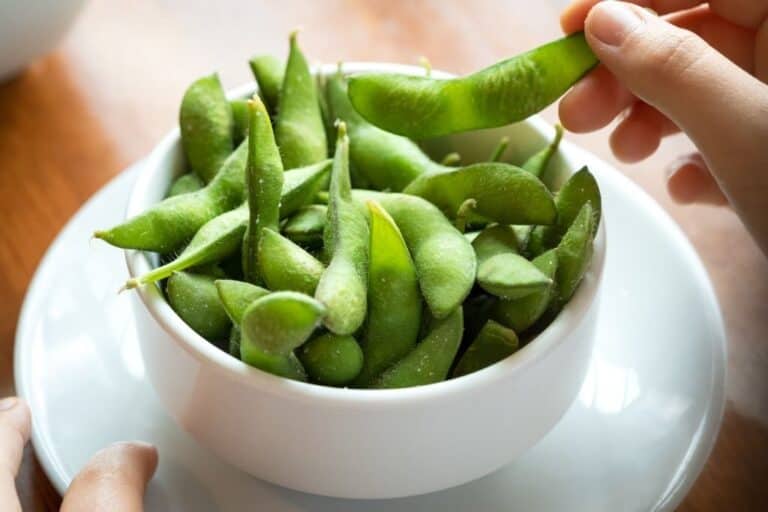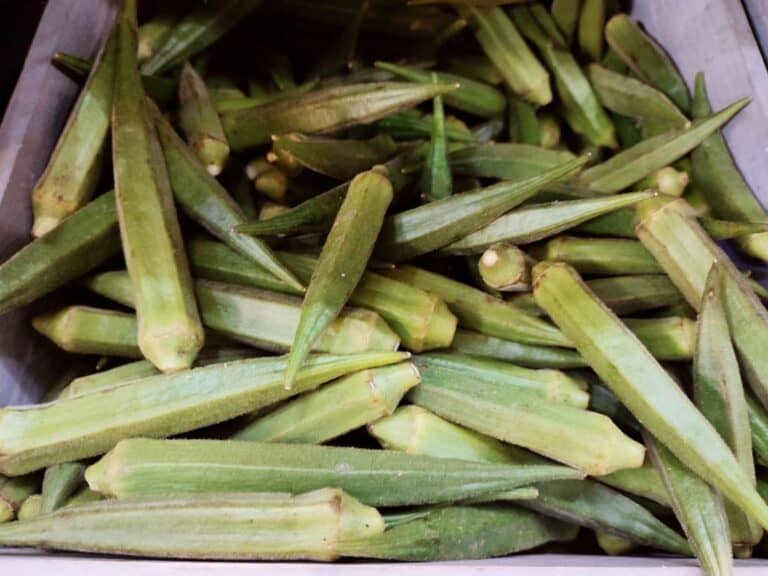Snap Peas vs Green Beans: Are They the same? (What’s the Differences?)

Snap peas and green beans might both be long, green vegetables, but are they really the same thing? While some people might think so, the truth is that snap peas and green beans have distinct differences in flavor, texture, and nutritional value. If you’ve ever found yourself pondering the similarities and differences between these two vegetables, you’re not alone.
Snap peas and green beans are not the same. Snap peas, also known as sugar snap peas, are a cross between snow and garden peas. They have a crunchy texture and sweet flavor, and the whole pod is eaten. Green beans, on the other hand, are generally relatively immature pods of bean varieties.
In this post, we’ll dive into the world of snap peas vs. green beans and explore the characteristics that set them apart. So, buckle up and get ready to discover the unique qualities of these two delicious vegetables!
Definition and Characteristics of Snap Peas
Snap peas, also known as sugar snap peas, are a type of edible-podded pea. They are a cross between snow peas and garden peas and are usually harvested when the pods are young and crisp.
The pea pods of snap peas are unique in that they are plump, juicy, and tender, with a slightly sweet flavor. Unlike other varieties of peas, snap peas are eaten whole, including the pod.
Snap peas are a great source of vitamins and minerals. They are particularly rich in vitamin C, vitamin K, and vitamin A. They are also a good source of fiber, which can help regulate digestion and promote a feeling of fullness. Snap peas are also low in calories and carbohydrates, making them an ideal food for those who are trying to manage their weight or blood sugar levels.
Snap peas are versatile in the kitchen and can be eaten raw or cooked. They can be enjoyed as a healthy snack on their own, added to salads or stir-fries, or served as a side dish.
Snap peas are easy to prepare and can be quickly blanched, sautéed, or roasted. Their crisp texture and sweet flavor make them a popular addition to many dishes, adding both flavor and nutrition.
Definition and Characteristics of Green Beans
Green beans, also known as string beans or snap beans, are a type of legume that is harvested when the beans are young and tender. They are a common vegetable in many cuisines around the world and are liked for their mild flavor and crunchy texture. Green beans are available in many different varieties, including stringless, French, and Italian beans.
Green beans stand out because they are long and skinny, with a slightly curved pod and small seeds that are often hidden in the flesh. Green beans can range in color from light green to dark green and even yellow or purple, depending on the variety. Unlike snap peas, the pods of green beans are not usually eaten, and they need to be trimmed or snapped before cooking.
Green beans are a rich source of vitamins and minerals. They are particularly high in vitamin C, vitamin K, and vitamin A, as well as potassium, magnesium, and calcium. They are also a good source of fiber and protein, making them an ideal food for those who are looking to maintain a healthy and balanced diet.
Green beans are a versatile food that can be used in many different kinds of meals. They can be boiled, steamed, roasted, or stir-fried, and can be seasoned with a variety of herbs and spices. Green beans are a popular addition to salads, soups, casseroles, and side dishes, and can also be enjoyed on their own as a healthy snack.
Snap Peas and Green Beans: Two Vegetables With Different Histories

Snap peas and green beans are two vegetables with different origins and cultural significance. Snap peas were first grown in the 17th century and are thought to have come from the Mediterranean. They were brought to America by Thomas Jefferson, who was a passionate gardener and introduced many new plants to the United States.
Green beans, on the other hand, have a more diverse history. People think they came from Peru, but they were also grown in Mexico and Asia. They were brought to Europe by Spanish explorers in the 16th century and became a popular food in many European countries. Native Americans were the first people to grow green beans in the United States, and European settlers learned how to do it from them.
Both snap peas and green beans have cultural significance in different parts of the world. In Chinese cuisine, snap peas are a popular ingredient in stir-fries and are often paired with other vegetables and meats. In Japan, snap peas are used in a dish called kinusaya no ohitashi, which is a boiled and seasoned snap pea salad.
Green beans are also a popular ingredient in many cultures, such as the classic American dish of “green bean casserole” or the French dish of “haricots verts” with butter and garlic.
Snap Peas and Green Beans in Asian Cuisine

Snap peas and green beans are two vegetables that are frequently used in Asian cuisine. These vegetables are known for their fresh and crunchy texture, which is a hallmark of many Asian dishes.
One of the most common ways that snap peas and green beans are used in Asian cooking is in stir-fries. These dishes typically include a combination of protein, vegetables, and sauce, and snap peas and green beans are often added for extra crunch and color.
Another popular Asian dish that features snap peas and green beans is curry. The rich and spicy flavors of the curry sauce are balanced by the fresh taste of these vegetables. In addition, snap peas and green beans are also commonly used in salads, soups, and spring rolls.
There are many traditional Asian recipes that feature snap peas and green beans. Here are some examples:
- Sichuan-style stir-fried green beans: This spicy dish is a favorite in Sichuan province, China. The green beans are stir-fried with garlic, ginger, chili bean paste, and Sichuan peppercorns for a flavor that is both spicy and numbing.
- Thai green curry with snap peas: This classic Thai dish features snap peas, along with chicken or tofu, coconut milk, and green curry paste. The snap peas add a fresh and crunchy texture to the creamy curry sauce.
- Korean-style green bean salad: This simple salad is made with blanched green beans, sesame oil, garlic, and soy sauce. It is often served as a side dish with Korean barbecue.
- Japanese-style snap pea and tofu stir-fry: This vegetarian dish features snap peas, tofu, and shiitake mushrooms, stir-fried with soy sauce and mirin. The snap peas add a sweet and crunchy texture to the dish.
Snap Peas vs Green Beans: The Differences
Here is a table summarizing the differences between snap peas and green beans:
| Compare Differences |
| Snap Peas |
| Green Beans |
| Definition | Edible-podded pea, eaten whole including the pod | Legume, pod not usually eaten |
| Flavor | Slightly sweet | Delicate |
| Nutritional Value | High in vitamin C, vitamin K, vitamin A, fiber, and low in calories | High in vitamin C, vitamin K, vitamin A, potassium, magnesium, calcium, fiber, and protein |
| Culinary Uses | Can be eaten raw or cooked, popular in salads, stir-fries, or served as a side dish | Boiled, steamed, roasted, or stir-fried, used in salads, soups, casseroles, and as a side dish |
| Preparation | Generally not trimmed, needs to be washed and stringed | Needs to be trimmed or snapped before cooking |
| Popular Varieties | Sugar Ann, Sugar Daddy, Super Sugar Snap | Blue Lake, French, Italian |
Snap peas and green beans share many similarities in terms of their nutritional value and culinary uses. Both are high in vitamins and minerals and can be enjoyed in a variety of dishes. But the main differences between the two are in how they are defined, how they taste, how they feel, and how they are made.
Snap peas are edible-podded peas that are slightly sweet and juicy, and are eaten whole, including the pod. On the other hand, green beans are legumes with a delicate flavor and crunchy texture, but the pods are usually not eaten and need to be trimmed or snapped before cooking. Additionally, snap peas do not require trimming, while green beans do, and there are different popular varieties of each. You can eat raw green beans, as they carried the same benefits if ate raw or cooked.
When it comes to cooking with snap peas and green beans, there are a few differences to keep in mind. Because snap peas are generally eaten whole, they are often blanched or steamed before being added to a dish to help soften their texture. Green beans, on the other hand, can be cooked in a variety of ways, including boiling, steaming, sautéing, or roasting.






